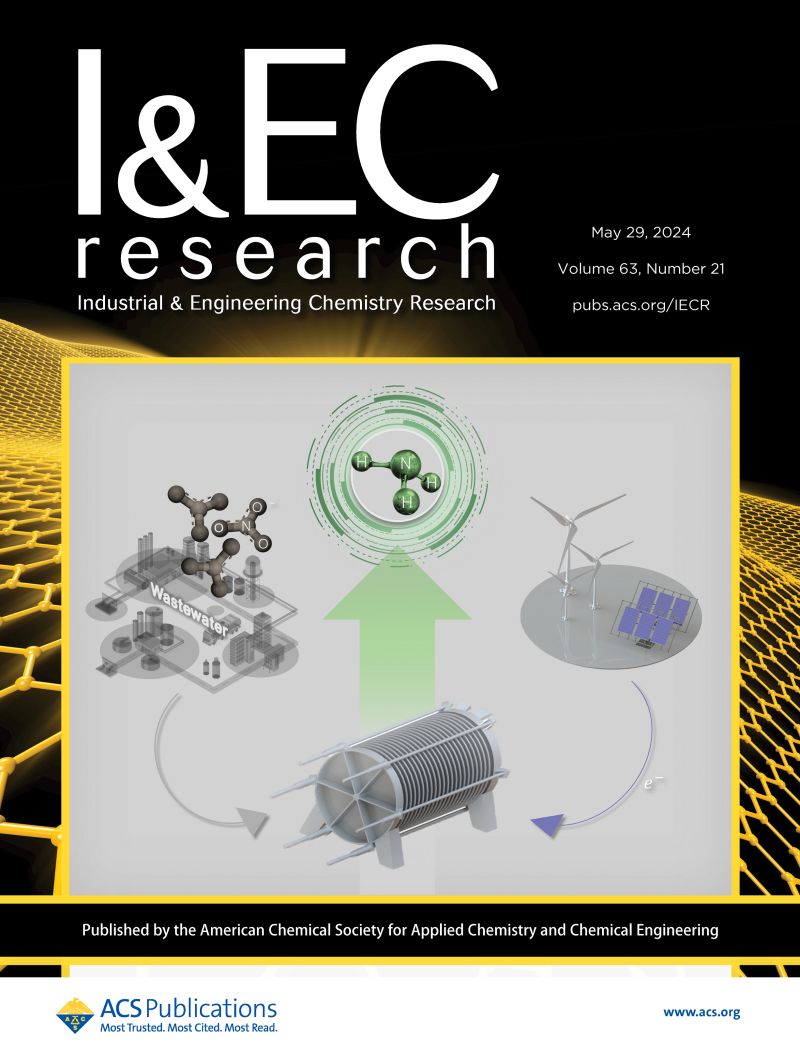Experimental Studies of the Highly Active Cu–Ni/In2O3 Catalyst for CO2 Hydrogenation to Methanol
IF 3.8
3区 工程技术
Q2 ENGINEERING, CHEMICAL
引用次数: 0
Abstract
The copper-based catalysts have been extensively exploited for the hydrogenation of CO2 to methanol. The In2O3-supported copper catalyst has also been investigated. However, its activity is not satisfactory, compared to that of other metal-promoted In2O3 catalysts. Herein, the In2O3-supported Cu–Ni bimetallic catalyst with a high dispersion of Ni and Cu species was prepared by chemical reduction. The addition of nickel leads to significantly higher activity at each temperature tested compared to Cu/In2O3. The activity of the bimetallic catalyst is also slightly higher than that of Ni/In2O3. For example, over Cu–Ni/In2O3 with a ca. 5/5 Cu/Ni weight percentage ratio, the CO2 conversion reaches 12.7% at 275 °C with a methanol selectivity of 66.6% and a methanol STY of 0.46 gMeOH gcat–1 h–1. However, the CO2 conversion and methanol selectivity are only 5.9 and 68.7% for Cu/In2O3 and 12.1 and 62.7% for Ni/In2O3 under the same condition. The use of Ni promotes the dispersion and activity of Cu/In2O3 and improves the stability of oxygen vacancies on the surface of In2O3, inhibiting the formation of the CuIn alloy. With the assistance of nickel, the Cu species also causes the formation of strongly CO adsorbed sites, resulting in improved methanol selectivity. Moreover, the Cu–Ni bimetallic catalyst has a strong hydrogen spillover effect, leading to more oxygen vacancies and improved CO2 adsorption.

高活性Cu-Ni /In2O3催化剂CO2加氢制甲醇的实验研究
铜基催化剂在CO2加氢制甲醇中得到了广泛的应用。还研究了负载in2o3的铜催化剂。但与其他金属促进的In2O3催化剂相比,其活性并不理想。本文采用化学还原法制备了镍、铜高度分散的in2o3负载型Cu - Ni双金属催化剂。与Cu/In2O3相比,镍的加入在每个测试温度下都具有更高的活性。双金属催化剂的活性也略高于Ni/In2O3催化剂。例如,在Cu - Ni/In2O3中,当Cu/Ni质量百分比为5/5时,275℃下CO2转化率达到12.7%,甲醇选择性为66.6%,甲醇STY为0.46 gMeOH gcat-1 h-1。而在相同条件下,Cu/In2O3的CO2转化率和甲醇选择性分别为5.9和68.7%,Ni/In2O3的CO2转化率和甲醇选择性分别为12.1和62.7%。Ni的使用促进了Cu/In2O3的分散和活性,提高了In2O3表面氧空位的稳定性,抑制了CuIn合金的形成。在镍的帮助下,Cu也会形成强CO吸附位点,从而提高甲醇的选择性。此外,Cu-Ni双金属催化剂具有较强的氢溢出效应,导致更多的氧空位,提高了CO2的吸附能力。
本文章由计算机程序翻译,如有差异,请以英文原文为准。
求助全文
约1分钟内获得全文
求助全文
来源期刊

Industrial & Engineering Chemistry Research
工程技术-工程:化工
CiteScore
7.40
自引率
7.10%
发文量
1467
审稿时长
2.8 months
期刊介绍:
ndustrial & Engineering Chemistry, with variations in title and format, has been published since 1909 by the American Chemical Society. Industrial & Engineering Chemistry Research is a weekly publication that reports industrial and academic research in the broad fields of applied chemistry and chemical engineering with special focus on fundamentals, processes, and products.
 求助内容:
求助内容: 应助结果提醒方式:
应助结果提醒方式:


